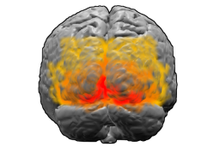“Subtle cues subconsciously influence our thoughts, feelings and behavior”
Our brain is fundamentally associative. Each time we have an experience, a huge neural associative representation is activated (e.g. moon: reading this word sets off a series of associations like night, white, wolf and illusion). This neural representation overlaps with related representations (e.g. seeing a table will also activate parts of the neural network representing chair).
Because of this spreading and overlapping activation in our brain, others can use specific ‘stimuli’ to pre-activate specific behavior they want to see from us (e.g. buying). The desired behavior is then already partially activated, requiring less additional effort to make us display that behavior.
Scientific research example:
Imagine you’re having a Caffé Latte at Starbucks. A stranger sits down at your table. How do you like him in terms of generosity and kindness?
Well, Williams & Bargh (2008) found that it depends on whether you’re having a normal or an Iced Caffé Latte. You’ll have warm feelings about him when you hold a warm Caffé Latte, and less so if you’re having the Iced version. In a second study Williams & Bargh found that the same hot/cold effect applies to your generosity, warm making you more willing to give…
Recent discussions:
In the past couple years, quite a bit of sceptism has risen concerning priming effects. Nobel prize laureate Daniel Kahneman even wrote an open e-mail to researchers who work on social priming to restore credibility in priming, by creating a replication ring to check each others’ results.
Online Persuasion tips:
[checklist]
- Think about which subconscious emotions and conscious thoughts are involved in buying your product, and subtly prime these during you online dialogue.
- For primes use and test emotions-matching and stereotyping content, colors and images, but also the complete look and feel of your pages.
- Also consider each desired sub-interaction and micro-prime these in the step(s) above.
- Be cautious of obvious priming which can cause a so-called ‘reverse-priming’ reaction.
- Thoroughly scan your online dialogue for negative primes (e.g. minuses, crosses, asterisks, or colors and images that mismatch the desired prime).
[/checklist]
Further reading on the Commitment bias or conceptual and associative priming:
- Automaticity of social behavior: Direct effects of trait construct and stereotype activation on action
- Priming on Wikipedia
- In the past few years there’s quite a bit of sceptism rissen around priming effects. Nobel prize laureate Daniel Kahneman even wrote an open email to researchers who work on social priming to restore credibility in priming by creating a replication ring to check each others’ results.


